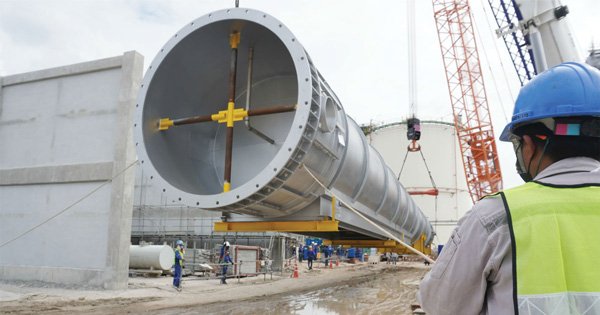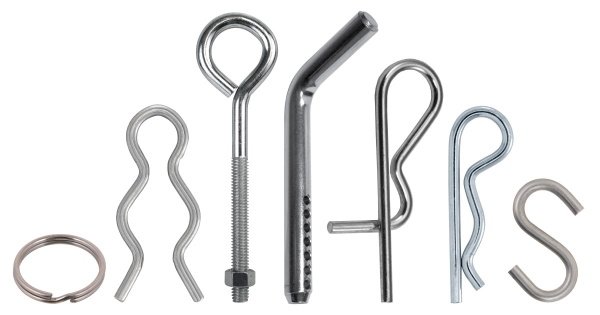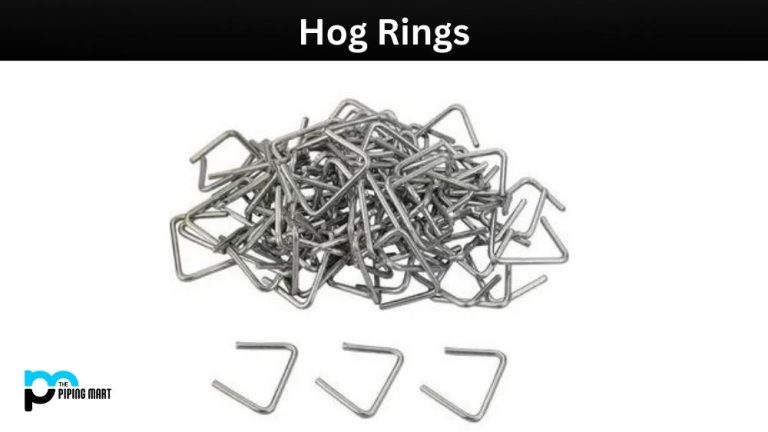
Rigging is a complex field, and experienced riggers rely on a comprehensive knowledge of rigging equipment, principles drawn from engineering and physics, and extensive safety regulations and standards. The terminology and concepts underlying rigging can be challenging to get to grips with. The following are some of the most common terms related to rigging equipment, safety, and standards.
Rigging is the equipment used to lift, suspend, support, tow, or tie down a load or the use of that equipment to do the same. It includes chains, wire ropes, slings, and the equipment used to connect these to a load, vehicle, supporting structure, or lifting machine such as a crane or hoist.
A rigging assembly is a combination of rigging equipment designed and built to achieve a particular objective. A typical rigging assembly includes a sling and other equipment such as hooks, shackles, turnbuckles, swivels, and lifting or spreader beams. The creation of safe rigging assemblies is one of a rigger’s primary responsibilities. They must select suitable equipment and construct an assembly appropriate to the load or task at hand.
A rigging sling is a length of chain, wire rope, natural or synthetic fiber rope, or webbing with attachment points at both ends. The sling is attached to or wrapped around the load and then attached to a lifting hook or other rigging equipment.
Rigging slings are attached to a load in various configurations called a hitch or sling hitch. Common sling hitches include:
- The vertical hitch, which connects one end of a sling to a crane hook and the other end to the load.
- The choker hitch, which wraps a single sling around the load. One end of the sling passes through an attachment or loop on the other end and is then attached to a lifting hook or other rigging hardware.
- The basket hitch, in which the sling is wrapped around the load and both ends — known as legs — are connected to the hook.
- The bridle hitch, which uses two or more vertical hitches to evenly distribute the load’s weight.

The chain grading system helps riggers understand a chain’s capabilities. Chains are made of different materials and produced in various sizes, both of which affect their strength.
- Grade 30 chain, also known as proof coil chain, is made of low‑strength carbon steel. It is used for light‑duty applications such as towing, lashing, and guard rails. Proof coil chain should not be used for overhead lifting.
- Grade 43 chain is stronger than proof coil chain, and it is often used for more demanding tasks in trucking, logging, and farming. It is not suitable for overhead lifting.
- Grade 70 chain, also known as transport chain, is made of heat‑treated carbon steel. As the name suggests, it is often used for towing and securing loads, but it is not suitable for overhead lifting. Grade 70 chain is typically yellow because it has a gold chromate finish.
- Grade 80, 100, and 120 chains are made of heat‑treated alloy steel. Like other chain grades, these are used for tie‑downs, towing, and load securing, but they are also strong enough for overhead lifting (depending on the working load limit (WLL) of the chain in question).
An eye bolt is a bolt with a loop on one end. Riggers use eye bolts to connect a load to a rigging assembly or to provide a tie‑down point. They are also used wherever there is a need to securely attach a chain or rope to an object or the ground.
There are two main types of eye bolts: machine eye bolts and nut eye bolts. Machine eye bolts are screwed directly into a threaded hole on a machine or other load. Nut eye bolts are inserted through an unthreaded hole and secured with a nut.
In lifting scenarios, the eye bolt is secured to the load, and a shackle is fixed to the bolt’s eye. Riggers can then attach other rigging equipment, such as hooks, to the shackle. Read
How to Install Eye Bolts and Eye Bolt Safety Best Practices to learn more.
Rigging hooks are heavy‑duty metal hooks. Several types of hooks are used in rigging, including
slip hooks and
grab hooks. They are used in many different rigging scenarios, often to collect slings to shackles or to suspend rigging assemblies from cranes. Other uses for rigging hooks include towing, lashing, logging, and hauling.
A
lifting shackle is comprised of a metal U‑shaped crown or bow with a pin penetrating the two free ends, which are called lugs. The pin may be secured to the shackle with a cotter pin, a nut, or some other fastening mechanism. Shackles are used to connect two parts of a rigging assembly. For example, they are often used to connect hooks to eye bolts.
Riggers use several types of shackles, which are named for the shape of the crown. For example, bow or
anchor shackles have wider O‑shaped crowns, while D‑shackles, which are also called
chain shackles, have narrow crowns. A
clevis shackle or clevis hitch is a shackle with a narrow U‑shaped jaw and a clevis pin secured by a cotter pin.
Turnbuckles reduce slack or adjust tension in rigging assemblies. They have a body with tapped holes into which turnbuckle ends with threaded shafts are screwed. One end has a right‑handed thread, and the other a left‑handed thread. When the turnbuckle body is rotated, the length of the turnbuckle assembly increases or decreases. The ends are available in many different designs — including eye, jaw, hook, and stub ends — so they can be connected to various rigging equipment.
Wire rope is made of metal wires twisted into strands and braided around a metal or fiber core. Wire rope is frequently used in rigging slings, as well as in multiple applications in the construction, mining, agriculture, and transportation industries.
Wire rope hardware — including
wire rope clips,
sleeves, and
thimbles — is used to join lengths of wire rope together or to make loops which allow the rope to be attached to other rigging equipment. Wire rope slings are often constructed by forming eyes at both ends with wire rope clips or sleeves and a thimble.
Learn more in
An Introduction to Wire Rope and Wire Rope Hardware.
Depending on the job, the rigging team may be one qualified rigger or a group of professionals with varying responsibilities, including riggers, spotters, lift directors, and site supervisors. For overhead lifts, these roles and responsibilities are defined by OSHA and ASME in standards such as ASME B30.3 and ASME B30.5.
A rigger is a tradesperson who uses rigging equipment to secure and move heavy loads. A rigger combines knowledge of rigging equipment, engineering, and safety principles to build rigging assemblies suitable for a wide range of lifting, lashing, securing, and towing. As experts in safely manipulating and moving heavy loads, riggers play a critical role in construction, logging, agriculture, and many other industries.
A spotter helps riggers and crane operators conduct safe lifts. Spotters have two primary responsibilities during a lifting operation. First, they analyze the rigging assembly, lifting plans, and crane to ensure they are suitable for the lift. Second, they monitor the lift to “spot” potential dangers. The spotter will communicate with the crane operator and warn them of problems such as obstacles or twisted slings.
The lift director ensures a lift is both safe and successful. Lift directors oversee the rigging crew, spotters, and crane operators. They ensure the area is prepared before the lift starts, that the lift is performed by competent personnel, and that the load is correctly rigged. ASME standards say that a lift director must be on‑site for every lift.
Crane operators are responsible for lifting and moving heavy loads with a crane. They work closely with riggers and spotters to ensure lifts are completed safely. Crane operators also carry out load and equipment inspections to ensure the crane and rigging equipment are adequate to the task at hand.
The site supervisor has overall supervisory control of the site and the work that occurs on it. Among other responsibilities, they ensure that the riggers and lift director are qualified for each task, that lifts are coordinated with other site activities, and that safety rules and regulations are followed.
A competent person is loosely
defined by the Occupational Safety and Health Administration (OSHA) as someone who is capable of “identifying existing and predictable hazards in the surroundings or working conditions which are unsanitary, hazardous, or dangerous to employees, and who has authorization to take prompt corrective measures to eliminate them.” Employers are responsible for ensuring a competent person inspects rigging equipment before lifts and verifying riggers have the knowledge, experience, skills, and training to perform lifting and rigging operations safely.
OSHA defines a qualified person as one who has “a recognized degree, certificate, or professional standing, or, who by extensive knowledge, training, and experience has successfully demonstrated his ability to solve or resolve problems related to the subject matter, the work, or the project.” As with “competent person,” the employer is responsible for determining whether an employee is qualified for a particular task.
ASME B30.2 defines a “designated person” as one who is assigned by the employer’s representatives as being competent to perform specific duties.
The minimum breaking load (MBL) is the maximum load rigging equipment can be exposed to until it breaks or fails. Rigging equipment should never be exposed to loads approaching the MBL. Instead, a safety factor is applied to arrive at a safe working load limit (WLL) or rated capacity (RC), as explained in the following entries.
To calculate the maximum load rigging equipment can safely lift or suspend, a safety factor ratio is applied to the MBL to arrive at a WLL or RC. For example, a lifting hook with a MBL or 10,000 lbs and a safety factor of 4 has a WLL of 2,500 lbs. The safety factor is also known as the design factor or, less often, the coefficient of utilization.
Safety factors provide a margin of error during lifting and rigging operations. MBLs are statistical measures calculated by testing multiple pieces of equipment; they are not a precise measure of the strength of any individual part.
Additionally, MBLs are calculated for new equipment, and the safety factor helps to account for wear during the equipment’s life. Safety factors also account for dynamic, shock, and uneven loading, which might expose rigging hardware to much higher forces than expected.
Working Load Limit or Rated Capacity
The WLL or RC is the maximum load rigging equipment can lift or suspend safely. It is calculated by dividing the MBL by a safety factor.
When building rigging assemblies, riggers must ensure that every component has a WLL sufficient to support the intended load. OSHA and ANSI regulations for rigging equipment mandate that the WLL must not be exceeded. For example,
OSHA 1926.251 says: “Employers must not use shackles with loads in excess of the rated capacities (i.e., working load limits).” Other rigging equipment is subject to similar regulations.
Learn more about WLL in
What is Rigging Hardware and How is it Rated?
A proof test is a non‑destructive load test to demonstrate rigging equipment and other load‑bearing equipment can support the forces they will be exposed to. ASME standards require proof testing in some scenarios.
New and repaired steel chain slings must be proof tested by a qualified person.
Wire rope slings with newly made eyes or joins created with
swage sleeves or
wire rope clips must be proof tested before they are used. Proof testing requirements differ by equipment type.
Static Load vs. Dynamic Load
Static load is the force that results from an unmoving suspended load. It is a constant force produced during a lift when the load is stationary. In contrast, a dynamic load changes over time during a lifting operation, most notably while the load is raised or lowered. Dynamic forces can be significantly larger than static forces for the same mass because of the effect of acceleration. Rigging equipment experiences a variety of static and dynamic loads, which riggers must account for.
Shock loading is an extreme example of dynamic loading. The total force rigging equipment experiences is a product of the load’s mass and acceleration. In shock loading, rapid acceleration causes very high forces that may exceed rigging equipment’s load limits.
Shock loading may occur when loads are lifted quickly, when they are dropped and then caught by the rigging, or when a moving load impacts an obstruction. Shock loading is prohibited by OSHA regulations, including
OSHA 1926.251(c)(11) and
OSHA 1910.184(c)(11).
Center of gravity (COG) is the point at which a load’s weight is distributed evenly and in balance. Riggers often think of it as the point at which all of an object’s weight is concentrated. A linear force applied at the COG produces linear movement without causing angular movement. To put it another way, lifting from above the COG raises a load without tilting or spinning it.
A load’s COG depends on its shape and the distribution and density of materials. For example, steel I‑beams have a uniform shape and density, so the center of gravity is at the midpoint of the beam’s length. In contrast, a car’s center of gravity is not at its midpoint because it is heavier at the end with the engine.
When lifting, the COG should be directly below the crane’s hook. This is achieved by attaching rigging at points equidistant to the COG. If the COG is not below the hook, the load is unbalanced. It will tilt and put unequal stress on rigging slings and other equipment.

Rigging Standards and Regulations
The
American National Standards Institute (ANSI) oversees the development of voluntary standards for almost every industry in the U.S., including rigging standards. ANSI does not create standards; it accredits and works with other organizations, including ASME, while providing a general framework for standard development.
The
American Society of Mechanical Engineers (ASME) creates detailed standards for the engineering industry, including rigging and lifting standards. ASME standards relevant to rigging and rigging equipment include:
- ANSI/ASME B30.9 Slings
- ANSI/ASME B30.10 Hooks
- ANSI/ASME B30.20 Below-the-Hook Lifting Devices
- ANSI/ASME B30.26 Rigging Hardware
The
Occupational Safety and Health Administration (OSHA) publishes federal standards and safety requirements. In contrast to ANSI and ASME, OSHA regulations are legally enforced. OSHA conducts safety inspections and can apply fines and penalties for non‑compliance.
OSHA regulations relevant to rigging include:
- OSHA 29 CFR 1910.179 Overhead and Gantry Cranes
- OSHA 29 CFR 1910.184 Slings
- OSHA 29 CFR 1926.251 Rigging Equipment for Material Handling
- OSHA 29 CFR 1926.753 Hoisting and Rigging
- OSHA 29 CFR 1926.1412 Inspection
- OSHA 29 CFR 1926.1413 Wire Rope – Inspection
- OSHA 29 CFR 1926.1434 Equipment Modifications
Where to Source Rigging Equipment
Huyett stocks a wide range of high‑quality
rigging and lifting hardware, including:
- Chain and
chain hardware
- Rigging hooks
- Eye bolts
- Eye nuts
- Swivels
- Turnbuckles
Explore huyett.com to explore our full line of lifting hardware, see product specs, and buy online, or
contact our friendly, knowledgeable Sales Team today.





